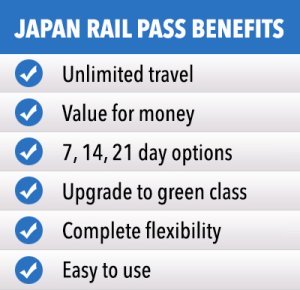Tokyo Travel Guide
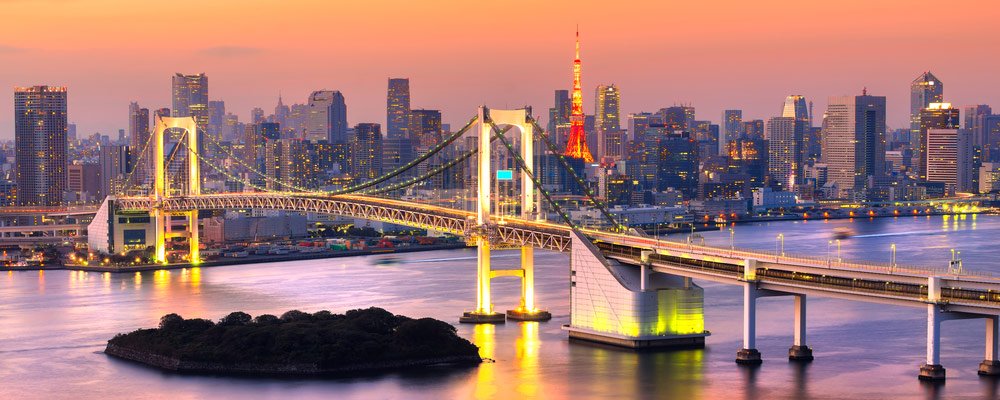
 Overview
Overview
Tokyo is Japan’s capital city and is the most populous metropolis in the world. Recognised as one of the world’s best tourist destinations, it has a wide array of historical, cultural and modern attractions to offer visitors any time of the year.
 When To Go
When To Go
The best time to go to Tokyo depends on what you want to see and do. All year round, the city has tons of sights to see and activities to take part in.
- In springtime (March – May), visitors to Tokyo gather in the city’s public parks and gardens, such as Ueno Park, Shinjuku Gyoen, Sumida Park, Inokashira Park, and Yoyogi Park, to get the best seats for cherry blossom viewing.
- In summer (June – August), despite temperatures going over 30 degrees and the humidity reaching uncomfortable levels, locals and foreigners flock to the many festivals held in the city, such as the Asakusa Samba Carnival, Harajuku Omotesando Genki Matsuri Super Yosakoi, and Fukugawa Hachiman Matsuri.
- During autumn (September – November), crowds gather in Tokyo’s parks to enjoy the beauty of the autumn foliage.
- In winter (December – February), the city holds a number of illuminations or Christmas lights events throughout the holidays. Also, going to an onsen in nearby towns is popular with tourists who want to escape the cold.
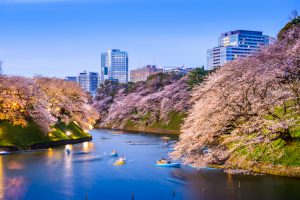
Imperial Palace moat during the spring season
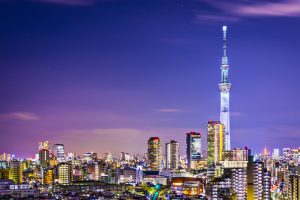
Tokyo cityscape with the Skytree
 Things To See
Things To See
Top Attractions
- Tokyo Disneyland and DisneySea – Both made up of 7 themed parks many attractions and rides, Tokyo DisneyLand and Sea can be enjoyed by both adults and children. Both of the resorts can be reached by JR Maihama Station. Go to where the magic is!
- Tokyo Skytree – The tallest structure in japan since 2010, a 634-metre high tower that offers a restaurant, cafe and observation decks with fantastic views over Tokyo.
- Tokyo Imperial Palace – located in the middle of Tokyo, surrounded by moats and stone walls is the official residence of the Imperial family. It also features beautiful gardens which is also featured below.
- Tsukiji Fish Market – An early morning visit to Tsukiji Fish Market is popular with foreign tourists in Japan. With more than 2,000 tons of fish and other marine products handled each day, the wholesale market is always busy – its stalls crowded with curious onlookers and its restaurants filled with visitors craving fresh, authentic Japanese seafood. It also offers other produce, such as fruit and vegetables.
- Tokyo Tower – One of Japan’s most important landmarks, the 333-metre high Tokyo Tower is the tallest, self-supported steel tower in the world. It was completed in 1958 and has served as the country’s symbol for its rise as a global economic power after the war. It has a 150-metre high observatory that can be accessed by either the stairs or the elevator and affords fantastic views of the metropolis
- Tokyo Metropolitan Government Building – For panoramic views of Tokyo, visit the observation decks of the Tokyo Metropolitan Government Building. They are 200 metres above the ground and access is free of charge. About a 10-minute walk from Shinjuku Station’s west exit, on clear days the skyscraper also provides scenic views of Mount Fuji, Tokyo Tower, Tokyo Dome and Tokyo Skytree.
Shrines & Temples
- Meiji Shrine – One of Tokyo’s top shrines, Meiji Shrine is a Shinto Shrine situated in a spacious, forested area between Shinjuku and Shibuya, and is a few minutes’ walk from Harajuku Station.
- Sensoji Temple – A popular ancient Buddhist temple in the Asakusa district
- Fukagawa Fudō-dō – A temple located in the historic Fukugawa neighborhood of Tokyo’s Koto ward, Fukugawa Fudo-do is a short train ride from Tokyo Station. Built in the early 18th century for the deity Fudomyo, the temple contains a gigantic wooden statue and around 10,000 miniature statues of the god.
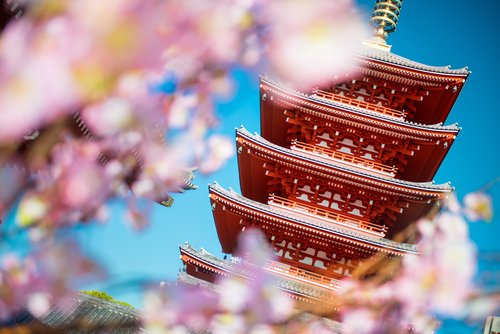
Sensoji Temple
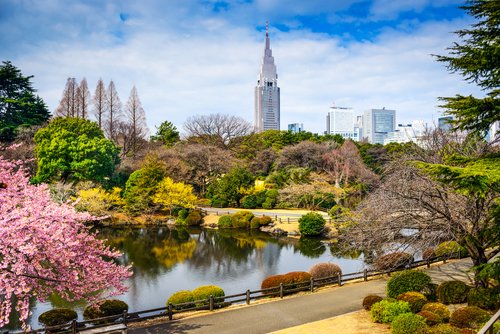
Shinjuku Gyoen
Go To Museums
- Tokyo National Museum – Japan’s oldest and largest national art museum that is home to more than 110,000 artifacts.
- Ghibli Museum – A must-visit for fans of Studio Ghibli’s films.
- Edo-Tokyo Museum – Features a diverse collection of pieces and artifacts from Tokyo’s several centuries of eventful history.
Relax At Parks
- Ueno Park – Situated in central Tokyo, a stone’s throw away from Ueno Station, Ueno Park is a spacious public park that features several historical buildings (Kaneiji Temple, Kiyomizu Kannon Temple, Bentendo and Toshogu Shrine) and educational and recreational facilities (Tokyo National Museum, National Science Museum, Tokyo Metropolitan Art Museum, National Museum of Western Art and Ueno Zoo).
- Yoyogi Koen – A large city park that features well-landscaped gardens, ponds, and recreational areas. It welcomes crowds of people in the spring during cherry blossom viewing season.
- Shinjuku Gyoen – A popular place for cherry blossoms and autumn leaves viewing.
- Imperial Palace East Gardens – Found in the Imperial Palace complex, it is home to a gorgeous Japanese landscape garden, huge castle moats, and ruins of foundations of the Edo Castle tower.
Shopping
- Ginza – The best place to go for upscale clothing, electronics, and other goods.
- Harajuku – Home to Takeshita Dori and Omotesando, two areas known for their diverse selection of fashionable, trendy and high-end stores.
- Ikebukuro – A bustling shopping and entertainment district best known for its numerous department stores and shops that cater to fans of electronics and gadgets.
 Where To Explore
Where To Explore
- Asakusa – A district in Tokyo where you can experience the old town feel. It is home to the 7th century Buddhist temple, Sensoji.
- Akihabara – A lively area in central Tokyo most popularly known for its manga, anime and electronic goods.
- Shibuya – Home to the world-renowned Shibuya crossing, this district is a culture and fashion hub for the young people of Japan.
- Shinjuku – With the busiest railway station in the world, Shinjuku is a busy shopping, entertainment and business district, where you can find many malls, restaurants, skyscrapers, museums, parks, and the Tokyo Metropolitan Government Building.
- Roppongi Hills – Founded in 2003, Roppongi Hills is Tokyo’s most modern district, consisting of numerous apartments, restaurants, cafes, shops, an art museum, a hotel, an observation deck, and other establishments and facilities. It features a 238-metre high building known as the Mori Tower, the Mori Garden, the TV Asahi Headquarters, and a wide selection of shopping and dining spots.
- Mt Fuji – Located just outside of Tokyo this is one of the most popular Japanese natural wonders. Mt Fuji is a 3,776-metre high active volcano found between the Shizuoka and Yamanashi Prefectures that attracts swarms of tourists all year round, especially during summer (July and August) when it is open for climbing. It is also known for the Fuji Five Lakes and its numerous hot spring resorts.
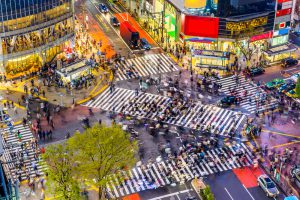
Shibuya Crossing
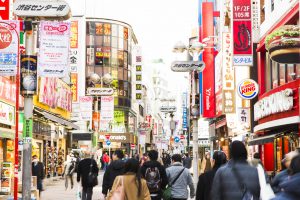
Shibuya – ©JNTO
 Getting Around
Getting Around
The Tokyo transportation network consists of many subway, train, and bus lines, operated by different companies such as Japan Rail, Toei Subways, Tokyo Metro, Tobu Railway, Keio Railway, and Odakyu Railway.
You can use the Japan Rail Pass on the JR Yamanote (loop line), JR Chūō and JR Keihin-Tōhoku lines.
Learn more about navigating Tokyo’s train system here.






